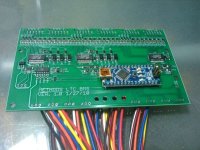grindz145
1 MW
TI has a similar part that I've demod that I like alot as well its the BQ78PL112 and BQ78pl114. I'm happy to see some more sophisticated BMS being utilized. TI has pretty much an identical chip too but I haven't designed with that one at all. The charge pumps on these for cells balancing is done really well. On top of that the these chips have impedance trac technology which all for fuel gauging without dumb coulomb counting and full cycling. They're like 10x more complicated though.
It sounds like other people have been working on some boards but I am willing to do some layout to help the effort if thats any use to anyone. I would love to see a standard come out (like an SMBus standard) which could allow any cycle analyst type device to read the SMBus type data (even if its not technically an SMBus implementation). This is juicy.
It sounds like other people have been working on some boards but I am willing to do some layout to help the effort if thats any use to anyone. I would love to see a standard come out (like an SMBus standard) which could allow any cycle analyst type device to read the SMBus type data (even if its not technically an SMBus implementation). This is juicy.





